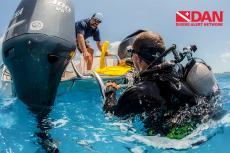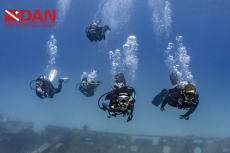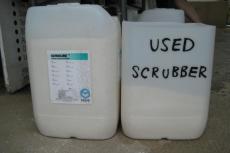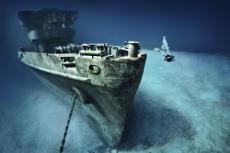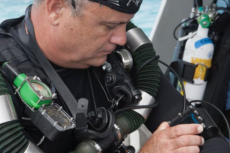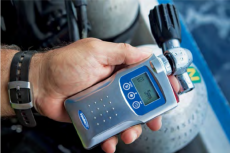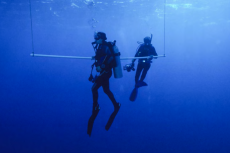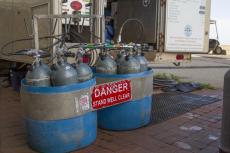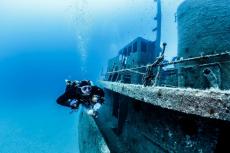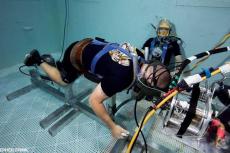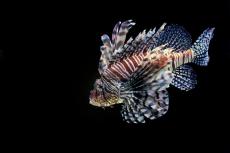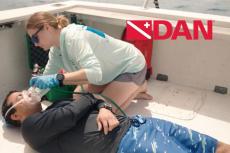Oxygen Toxicity for Divers
Oxygen toxicity is a serious topic, but one that many divers struggle to understand. We know that calculating oxygen exposure is important to our safety, but we may not know why or what happens if we exceed the safe exposure limits.
Following training guidelines and conservatively planning our dives can reduce our risk somewhat, but learning how oxygen toxicity affects us and how we can prevent it can mean the difference between a fun dive and one that ends in injury. Push back against complacency and unquestioning acceptance of common practices—understand the effect of oxygen on your body before you plan your next dive.
What is oxygen toxicity?
Inappropriate oxygen exposure can have many negative effects on the body, but there are two primary types of toxicity that affect divers. The first is pulmonary oxygen toxicity. This type of toxicity is of concern only to divers doing very long technical dives (in the range of six to 12 hours) and divers doing repetitive technical dives over a period of days or weeks.
Pulmonary oxygen toxicity typically begins with inflammation of the upper airways that then spreads to the lungs. Manifestations of pulmonary oxygen toxicity include alveolar collapse and damage, decline in lung function and acute respiratory distress syndrome (ARDS).
Central nervous system (CNS) oxygen toxicity is a more pressing concern for most divers because it can arise suddenly and cause seizures. CNS oxygen toxicity can occur with very short exposures to significantly elevated partial pressures of oxygen, and divers should be careful to calculate and respect both their depth and exposure time with a chosen breathing gas. Extreme exposures to oxygen can have various other effects including hyperoxia-induced myopia, a condition which affects vision, but these are less common and rarely life- threatening.
Understanding how oxygen acts in the body to cause these problems requires an understanding of the human nervous system. The nervous system comprises two opposing sides, the sympathetic and parasympathetic. Every organ in the body is controlled by one of these sides or a facet of their interaction.
As a rule, the sympathetic nervous system activates the body and prepares it for action, while the parasympathetic nervous system calms it down to promote recovery. In the central nervous system, the complex of tissues that makes up the brain and spinal cord, nitric oxide (NO) is used to decrease the activity of the sympathetic nervous system and widen the blood vessels.
Normally, some but not all of these NO molecules bind with reactive oxygen species (ROS), which are byproducts of metabolism. The remaining NO molecules are available to control the sympathetic nervous system. When the body is exposed to too high a partial pressure of oxygen, all NO molecules can be occupied by ROS, with none left to control the sympathetic nervous system.
Sympathetic activity becomes extreme, and the body releases enormous quantities of adrenaline and noradrenaline in a reaction called an adrenergic storm. This storm can cause seizures, narrowing of arteries and spiking of blood pressure and heart rate and may lead to capillary damage and compromised gas exchange.
Who is at risk?
Divers using nitrox, rebreathers and oxygen as a diving gas are at risk for oxygen toxicity. Exceeding depth limits while diving on oxygen or nitrox, failing to correct a rebreather failure and making an inappropriate gas switch that results in a high partial pressure of inspired oxygen can each quickly put a diver at risk of CNS oxygen toxicity.
Mitigating these risks is not difficult but takes some preparation. Understanding—and complying with—training guidelines for switching gases at depth, calculating breathing-gas maximum operating depths (MODs), and responding to rebreather failures can effectively minimize your risk of an incident.
It is critical to accurately plan your oxygen exposure for both your primary and backup dive plans, and to practice responding to rebreather failures. Also keep in mind that in the event of an injury requiring recompression, you will require additional oxygen exposure. Fortunately, CNS oxygen toxicity in a hyperbaric chamber is not particularly dangerous since there is no risk of drowning, but planning your oxygen exposure to include a recompression treatment is is a worthwhile way to mitigate a potential hazard to your health.
For more information on oxygen toxicity, visit DAN.org/Health
- Log in to post comments










